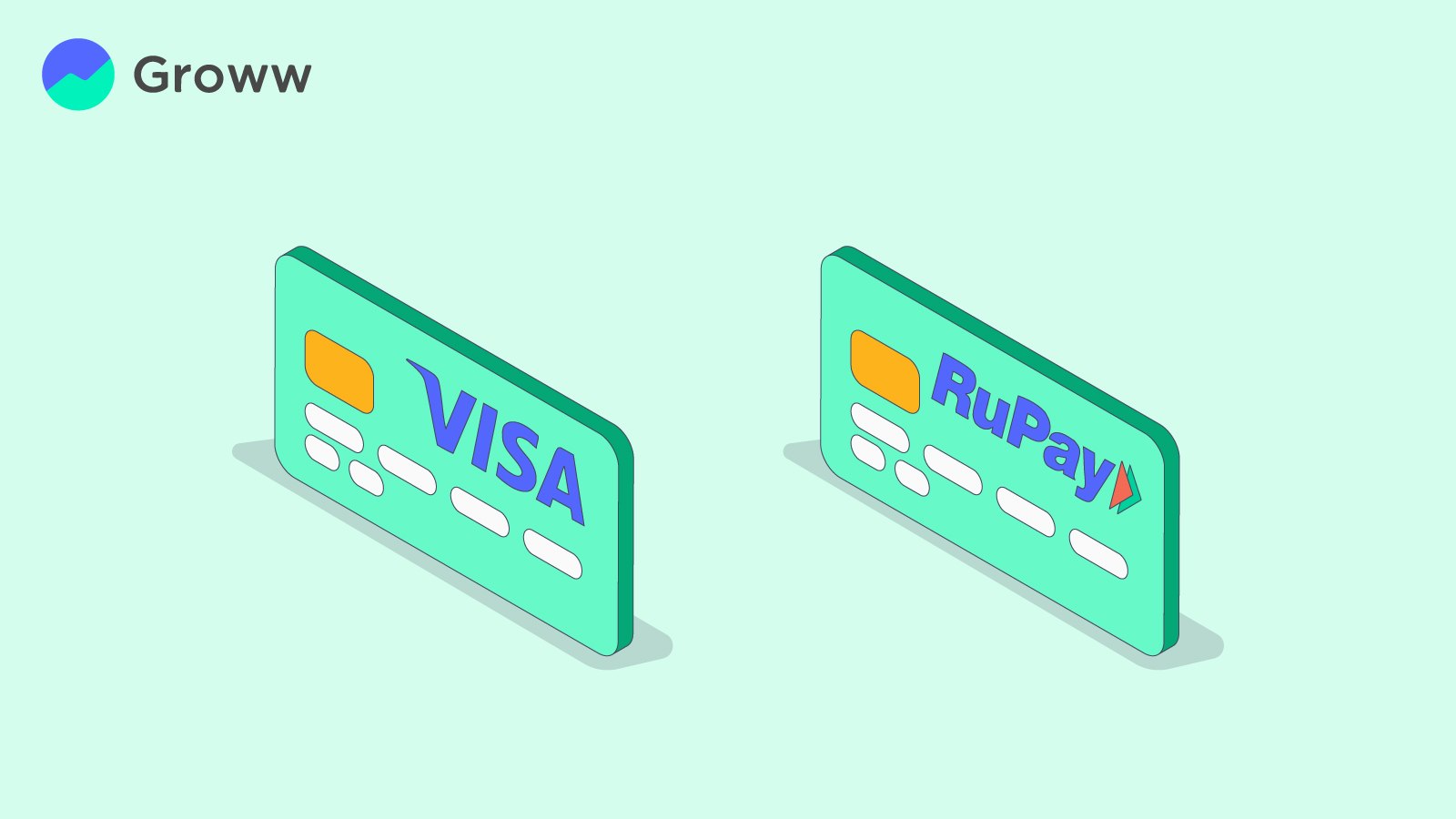Difference Between RuPay and Visa Card

As India grows into one of the world’s largest economies, the financial services sector is transforming significantly. Cashless transactions are gaining currency compared to cash transactions.
Today, a variety of transactions can be conducted in cashless mode through cards. When it comes to choosing a new card, many find themselves torn between RuPay and Visa.
In this blog, we will discuss more about RuPay cards and Visa cards, some of the key difference between RuPay and Visa cards, and which one can be a better choice. Read on for further insights.
What is a RuPay Card
- RuPay is a multinational financial service and payment solutions system launched by the National Payments Corporation of India Ltd (NPCIL).
- It is India's indigenous payment service platform, initiated by the RBI, with the aim of establishing a domestic, open, multilateral payment system and promoting financial inclusion.
- The name “RuPay” has been derived from “Rupee” and “Pay”. RuPay has evolved to be one of the most popular and accepted payment networks in the country.
- It offers a wide range of debit, prepaid, and credit cards with a minimal transaction cost, making it more affordable for the less privileged sections of society. Recently, RuPay tied up with Discover Financial Services of the US, Pulse and Union Pay of China, and JCB of Japan. This will allow users to transact not only domestically but also across numerous merchant networks.
What is a Visa Card
- Visa is a US-based multinational payment gateway and card solutions company.
- It is one of the most popular card networks, with a presence in more than 200 countries and partnerships with more than 14,500 financial institutions worldwide.
- Visa offers a wide range of debit cards, prepaid cards, credit cards, and various types of co-branded credit cards.
RuPay vs Visa Card: Key Difference
Let’s explore some of the key difference between RuPay and Visa cards based on the following parameters:
|
Particulars |
RuPay |
Visa Card |
|
Acceptance and Reach |
The RuPay card is widely accepted within India, but you cannot make payments on international websites using it. |
Visa is widely accepted both domestically and internationally. You can use a Visa card to make payments in almost every country in the world. |
|
Processing Fees |
The transaction fees are comparatively lower than those of other card networks, as each transaction conducted through this card is processed within India. |
As Visa is an international payment network, the transaction processing takes place outside the country. Therefore, it has a comparatively higher processing fee than RuPay. |
|
Transaction Speed |
The transaction speed of RuPay is faster than that of Visa and other payment networks. |
The transaction speed is comparatively slower than that of RuPay. |
|
Target Customers |
The primary target customers of RuPay are the underprivileged sections of society, especially in the rural areas of India. |
In India, Visa cards are more prevalent in Tier 1 and Tier 2 cities. |
RuPay vs Visa: Which is Better
The answer to the question, “Visa vs RuPay, which is better?” depends on your usage and needs, i.e. the type of transactions you make.
- For Domestic Use: If you are carrying out transactions within the country, a RuPay card is the best option. Its lower transaction fees and faster processing time make it suitable for everyday use.
- For International Use: However, if you are dealing internationally or frequently travelling abroad, Visa cards can be the ideal option for you. Its wide acceptance and comprehensive global benefits provide convenience and added security for international use.
Summing Up Visa Card vs RuPay Card
To wrap up, both RuPay and Visa cards offer unique benefits that cater to different customer needs.
By understanding the key difference between RuPay and Visa cards, you can now make an informed choice that best suits your lifestyle and requirements. Whichever you choose, consider checking their fee structure, terms, and perks to maximise your card benefits.